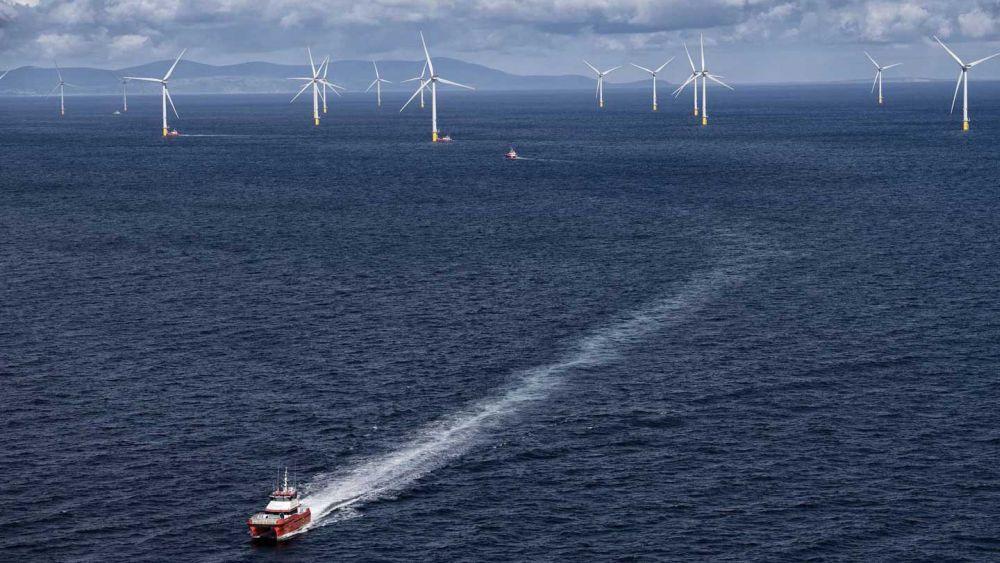Green Energy Could Put Your Company on the Path to Net Zero: Here's How You Start

Originally published on CDP.net
By choosing renewable energy, companies can curb their greenhouse gas emissions and help tackle the climate emergency. Here are some practical tips to get you started.
The EU and the UK have ambitious plans for a net-zero emissions economy by 2050, while the world has just ten years to halve emissions and avoid catastrophic climate impacts. Companies will play a key role in meeting these challenging goals through the energy choices they make.
Energy is typically a source of significant costs and carbon emissions for businesses, but that dynamic is changing as renewables expand at a global scale, and wind and solar become cheaper than new-built coal and gas plants across two-thirds of the world. By choosing renewable electricity, companies take a measurable step towards reducing their carbon emissions at stable prices.
The right renewable energy strategy can help balance commercial priorities with carbon reduction targets. To get started, consider your company’s sustainability and cost objectives:
Green energy is the fastest way to meet carbon reduction targets
Setting a science-based carbon reduction target and driving down emissions are necessary and fundamental steps for businesses today. By sourcing green electricity your company can achieve quantifiable reductions of scope 2 emissions as defined by the Greenhouse Gas Protocol. You can choose to source power from an existing renewable energy asset. Or, invest in a new asset, which helps bring clean energy jobs and growth to local communities and expands global green energy capacity.
To ensure management buy-in for your plans, show how sourcing of green power can reduce your company’s carbon emissions and help progress key business performance indicators. And when you disclose your emissions reductions in the annual reporting cycle, it helps increase credibility of your sustainability work and signals green leadership towards customers, investors and supply chain partners.
Importance of budget certainty to the business
Energy contracts typically last 1-3 years and reflect market prices. In contrast, corporate power purchase agreements (PPAs) offer a fixed price over a long term, which provides budget certainty and reduces energy price risk. A mix of long- and short- term agreements could provide price certainty and flexibility, in case your energy needs change.
Choose a renewable energy strategy that works for you
Ørsted, one of the world’s largest renewable energy companies, outlines three ways in which companies can become more sustainable with green power:
- Choose an electricity supply contract from an energy provider who supplies power from 100% renewable and traceable sources. The most impactful sourcing specifies that the power comes from a specific renewable energy technology or asset. To claim and report on zero scope 2 emissions, you need Renewable Energy Guarantees of Origin (REGOs), which trace consumption back to a specific asset and cannot be ‘double sold’.'
- Large businesses can choose a Corporate PPA, where they enter into a long-term renewable energy supply agreement using energy from a specified project or green energy generating asset, such as an offshore wind farm or solar plant. Corporate PPAs can cover up to 100% of a company’s energy needs and typically run for 10 years or more.
These agreements can help accelerate the build out of renewable energy capacity if they are used to draw investment into new green energy generating assets. An offshore wind PPA agreed by Covestro and Ørsted at the end of 2019, for example, supports development of the 900MW Borkum Riffgrund 3 offshore wind farm in Germany.
- Choose a flexible approach to energy usage. Avoid expensive peak periods to reduce electricity cost and consume more energy when power is cheaper, while also procuring renewable power.
According to BloombergNEF, a record high 19.5GW of clean energy PPAs were signed by more than 100 companies in 23 countries in 2019, a 44% increase since 2018 and three times higher than in 2017.
Read more about corporate PPAs and options for renewable energy procurement here.

